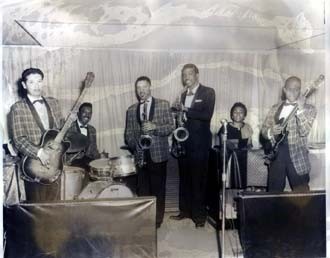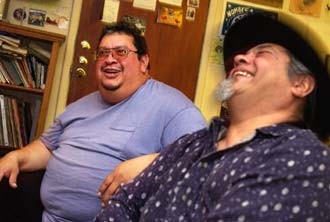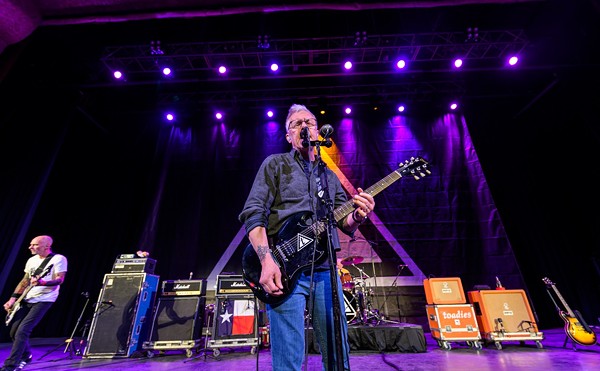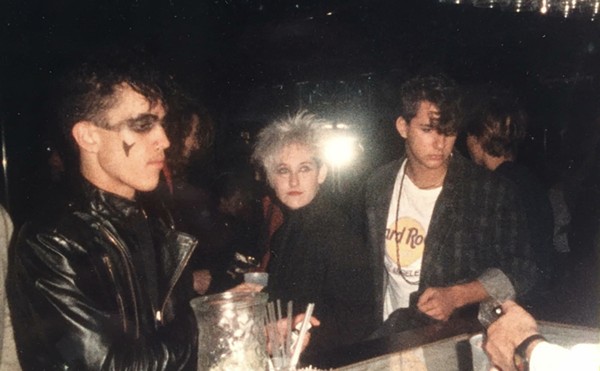|
San Anto Music Preservation Project collects oral histories Saxophonist Spot Barnett has a soothing way of speaking: slow, smooth, and jazzy. And to hear him tell a story - of being hit on the head with a bowling pin, of hearing Charlie Parker on the radio for the first time, of performing "Mambo No. 5" - is to be swept away to another time and place. Last year, Barnett told much of his life story in a video interview as part of the San Anto Music Preservation Project, whose organizers are recording oral histories of the city's music legends. A collaboration between San Anto Cultural Arts and Conjunto Taller, the Music Preservation Project chronicles the evolution of the modern SA music scene from its mid-century roots to its '60s heyday to today's second- and third-generation players. As a crossroads for multiple styles - Tejano, conjunto, Chicano soul, jazz, R&B, country, and blues - San Antonio music became integrated well before all races could drink from the same water fountain.
Castillo, accomplished videographer Ray Santisteban, and several musicians, including George Gonzales, Rudy Lopez, and Toby Torres Jr., serve as interviewers and information sources to document San Antonio's musical legacy. "We lost Randy Garibay and others, and no one ever captured their stories," Castillo explains. "No one ever sat them down and said, 'Tell us your life.'" Now someone is.
Part ethnography, part musical reminiscence, the oral histories offer glimpses into small moments that comprise a lifetime as well as the pivotal events. "When people are doing histories, they're doing politicians, sports figures, famous people of their times," says Santisteban. "It's a community history we're recording, with music as the thread. Working people happen to be musicians and through their stories you get a window into the life of San Antonians."
In the interview conducted by George Gonzales, Barber embarks on hilarious tales: learning to dance "the Freddie" for the Hullabaloo show, introducing Flaco Jimenez to an ostentatiously dressed Elton John ("Who's the dude with goldfish in his shoes?" Flaco asked), performing at a black club in Del Rio, where everyone received his own bottle of Thunderbird. "We were doing all these black tunes," Barber explains, "and people are doin' the Alligator on the floor. They're begging us not to leave. I've played Carnegie Hall, the Hollywood Bowl, some big joints, but that place topped it all."
While many cities were markedly segregated before the Civil Rights movement, pianist and organist June Parker remembers San Antonio as more racially integrated, particularly in its music scene. She performed in the house band at a black establishment, the Eastwood Country Club, backing such national acts as Etta James, Ike and Tina Turner, and Gatemouth Brown. "When I played at the Eastwood it was outside the city limits. All races were coming. And after integration, around '62, it really got full of all races. People wanted to mix up. Music is universal. It will draw any color. It's just like a magnet." Many of the musicians' stories center on experiences on the road, as they made the rounds of ramshackle Texas jukejoints and small San Antonio nightclubs that bore swanky names such as the Keyhole, the Ebony, or the Black Orchid. When Parker performed with the Harold Stanberry Band, the quintet traveled in a Dynaflow Buick, which resembled a boat more than a car. "We'd get into that Buick and go," Parker told Manny Castillo. "Most of the time I'd drive. Most of the band drank and I didn't. I was the sober one." Parker split her time between Texas and California, often driving to the West Coast by herself; she even unwittingly drove to Los Angeles during the Watts riots. "I didn't have a pistol. I didn't have nothing but trusting in God."
Several of the interviews are notable for their candidness. While speaking fondly of learning music - and playing his first solo - at the Bluebonnet Church of God and Christ, Barnett, one of SA's premier horn players, doesn't shy away from the 1967 Waco drug bust that landed him in prison. "I like to tell people that it's the best thing that ever happened to me. I was able to put my life in perspective I was able to completely devote my mind to music and discipline myself." When the project gains some heft - the goal is to conduct at least 50 interviews and add to the body of work over time - organizers plan to deposit the material in an institution's archives and make it available as a multi-media presentation on a website. Preserving San Antonio's musical legacy is a primary reason why Barnett, who performed with Sahm as well as led his own string of successful ensembles, agreed to be interviewed for the project. "We need to get the word out that people don't live forever, but books, words, and documentation do," he said. "And it's so important that somebody take note of what happens and who did what when. Else, when somebody dies without telling their story it is gone forever." • By Lisa Sorg
|

KEEP SA CURRENT!
Since 1986, the SA Current has served as the free, independent voice of San Antonio, and we want to keep it that way.
Becoming an SA Current Supporter for as little as $5 a month allows us to continue offering readers access to our coverage of local news, food, nightlife, events, and culture with no paywalls.
Scroll to read more Music Stories & Interviews articles
Newsletters
Join SA Current Newsletters
Subscribe now to get the latest news delivered right to your inbox.


















